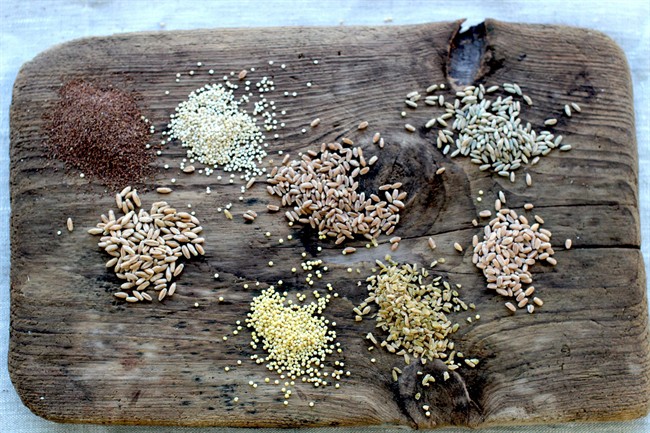When Samuel Kim was growing up, his mother often spiked the family’s white rice with amaranth, barley, quinoa and other whole grains to boost its nutritional value.

“My mom is one of those people who looks for the health benefit in everything,” says Kim, executive chef at Washington, D.C.’s 1789 restaurant. “Any new fad or trend, she’s reading about it and adding it to her diet.”
In this case, Kim’s mom was ahead of her time. Whole grains have crossed the frontier from hippie fad into mainstream North American ingredient, showing up not only in restaurant fare such as Kim’s freekeh and black quinoa-studded dishes, but also at salad joints and in multiple supermarket aisles (not just the natural foods sections!).
Driven by a new awareness of healthy eating, increased demand for gluten-free products, and a desire to spark up their kitchen routine, more Americans are reaching for exotic grains with mystifying names such as teff and triticale. Sales of grains in natural food stores rose more than 40 per cent from 2013 to 2014, according to market research firm Mintel. Quinoa remains the leader, with nearly 80 per cent of sales, but farro and freekeh showed the greatest growth.
And it isn’t just in natural foods stores. Unusual grains are being sold throughout mainstream grocers, from the sushi by the deli counter to yogurts studded with blends of grains and seeds.
The Milwaukie, Oregon, grain and flour company Bob’s Red Mill saw quinoa explode roughly five years ago, said a company spokeswoman. Executives there realized that if people were excited about one obscure South American product – which technically is a seed, but is eaten like a grain – perhaps they would be interested in other whole grains.
“It’s a gateway grain for these more unusual grains,” said Bob’s Red Mill marketing manager Amanda Carter.
“Quinoa has become a pantry staple. We see the potential for that to happen with these other ancient grains as well.”
In 2013, the company re-branded some of its whole grains under a new label with packaging that offered a cultural history, nutritional benefits and recipes. The “Grains of Discovery” line now includes 16 whole grains and seeds, including bulgur, farro and sorghum, Carter said. Quinoa still is the company’s bestseller, but farro is second. Sales of millet have nearly doubled.
While whole grains have gained cache, the perception that they are difficult to prepare or require a lot of time stops some cooks from using them. But many grains, such as millet, amaranth and buckwheat, cook as fast as – or faster than – white rice. Slow-cooking grains such as wheat berries or rye berries can be soaked overnight like beans then briefly boiled, says cookbook author Maria Speck, who outlines techniques in her new book “Simply Ancient Grains.” Once cooked, they can be stored in the refrigerator for days, Speck says, or even frozen.
“If you have a pot of these grains in the fridge or freezer, you’ll be suddenly so surprised at your own creativity,” Speck says. “Throw a handful of millet or wheat berries into a soup or a salad. Here you have a meal, and suddenly it’s nourishing and you haven’t done any cooking because you have your grains at the ready.”
—
We’ve assembled recipes on some of the most popular grains and how to cook and enjoy them.

Comments